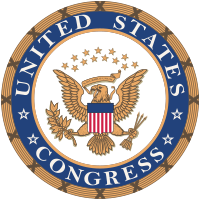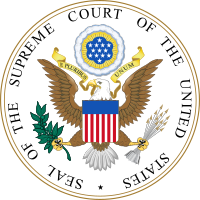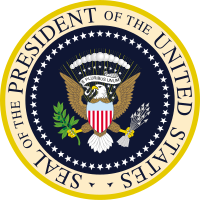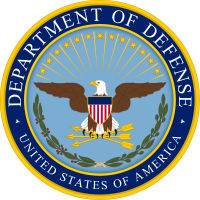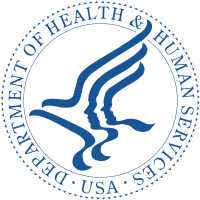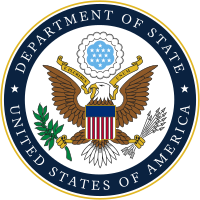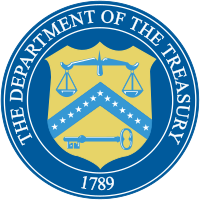Legislative definitions of an agency of the federal government of the United States are varied, and even contradictory. The official United States Government Manual Administrative Procedure Act definition of "agency" applies to most executive branch agencies, Congress may define an agency however it chooses in enabling legislation, and through subsequent litigation often involving the Freedom of Information Act and the Government in the Sunshine Act . These further cloud attempts to enumerate a list of agencies.
The executive branch of the federal government includes the Executive Office of the President and the United States federal executive departments (whose secretaries belong to the Cabinet ). Employees of the majority of these agencies are considered civil servants .
The majority of the independent agencies of the United States government are also classified as executive agencies (they are independent in that they are not subordinated under a Cabinet position). There are a small number of independent agencies that are not considered part of the executive branch, such as the Congressional Research Service and the United States Sentencing Commission , which are legislative and judicial agencies, respectively.
United States Congress The U.S. Congress is the bicameral legislature of the United States government, and is made up of two chambers: the United States Senate (the upper chamber) and the United States House of Representatives (the lower chamber). Together, the two chambers exercise authority over the following legislative agencies:
The legislature also oversees the Library of Congress (LOC), a national library dedicated to national records, which administers various programs, agencies, and services including:
Federal judiciary of the United States The federal judiciary consists of courts established under Article Three of the United States Constitution . These are the
The United States bankruptcy courts , while not established as Article III courts, are legally designated as "units of the district courts."[5]
The judicial branch includes the following agencies:
Executive Office of the President The President of the United States is the chief executive of the federal government. He is in charge of executing federal laws and approving, or vetoing, new legislation passed by Congress. The President resides in the Executive Residence (EXR) maintained by the Office of Administration (OA).
To effectively run the country's affairs, the President also maintains councils regarding various issues, including:
White House Office United States Department of Agriculture (USDA) Office of the Secretary of Agriculture Office of the Assistant Secretary for Congressional Relations Office of the Assistant Secretary for Civil Rights Office of the Assistant Secretary for Administration Office of Tribal Relations (OTR) Departmental Administration (DA)Office of Customer Experience Office of Contracting and Procurement (OCP) Office of Homeland Security (OHS) Office of Human Resources Management (OHRM) Office of Operations (OO) Office of Property and Environmental Management (OPEM) Office of Safety, Security and Protection (OSSP) Office of Small and Disadvantaged Business Utilization (OSDBU) Agriculture Buildings and Facilities (AgBF) Hazardous Materials Management (HMM) Office of Budget and Program Analysis (OBPA) Office of Communications (OC) Office of Ethics (OE) Office of Hearings and Appeals (OHA) Office of Inspector General (OIG) Office of Partnerships and Public Engagement (OPPE)Center for Faith-Based and Neighborhood Partnerships (CFBNP) Office of the Chief Economist (OCE) Office of the Chief Financial Officer (OFCO) Office of the Chief Information Officer (OCIO) Office of the Executive Secretariat (OES) Office of the General Counsel (OGC)Office of Information Affairs Under Secretary of Agriculture for Farm Production and Conservation (FPAC) Under Secretary of Agriculture for Food, Nutrition, and Consumer Services (FNCS) Under Secretary of Agriculture for Food Safety Under Secretary of Agriculture for Marketing and Regulatory Programs (MRP) Under Secretary of Agriculture for Natural Resources and Environment (NRE) Under Secretary of Agriculture for Research, Education, and Economics (REE) Under Secretary of Agriculture for Rural Development (RD) Under Secretary of Agriculture for Trade and Foreign Agricultural Affairs (TFAA) United States Department of Commerce Office of the Secretary (OS) Office of the Assistant Secretary for Export AdministrationOperating Committee for Export Policy (OC) Office of Strategic Industries and Economic Security Office of Nonproliferation and Treaty Compliance Office of National Security and Technology Transfer Controls Office of Exporter Services Office of Technology Evaluation Office of Export Enforcement (OEE)United States Department of Defense (DOD) Office of the Secretary of Defense (OSD) Defense agencies National intelligence agencies Defense field activities Universities and research institutes Unified combatant commands Joint agencies Department of the Army U.S. Army Commands U.S. Army Direct Reporting Units U.S. Army Field Operating Agencies Department of the Navy U.S. Navy Functional Operating Forces Shore Establishment and Activities, Echelon II U.S. Navy Field Support Activities Department of the Air Force U.S. Air Force U.S. Air Force Major Commands Reserve and Auxiliary Components Direct Reporting Units Field Operating Agencies U.S. Space Force U.S. Space Force Major Commands Direct Reporting Units United States Department of Education Office of the Secretary of Education (OSE) Office of Communications and Outreach Office of Finance and Operations Office of Inspector General Office of the General Counsel Office of Legislation and Congressional Affairs Office for Civil Rights Office of Educational Technology Office of the Chief Information Officer Office of Planning, Evaluation and Policy Development Budget Service Risk Management Service Office of Deputy Secretary of Education (ODSE) Institute of Education Sciences (IES) National Center for Education Evaluation and Regional Assistance National Center for Education Research National Center for Education Statistics National Center for Special Education Research National Board for Education Sciences Office of the Under Secretary (OUS) White House initiatives and operating commissions Advisory bodies Federally-aided corporations United States Department of Energy Leadership offices Program offices[7] Staff officesOffice of Congressional and Intergovernmental Affairs Office of Economic Impact and Diversity Office of Enterprise Assessments Office of Environment, Health, Safety, and Security Office of Hearings and Appeals Office of Inspector General Office of Intelligence and Counterintelligence Office of International Affairs Office of Management Office of Policy Office of Project Management Office of Public Affairs Office of Small and Disadvantaged Business Utilization Office of Technology Transitions Office of the Chief Financial Officer Office of the Chief Human Capital Officer Office of the Chief Information Officer Office of the General Counsel Power administrations and other agencies National Laboratories & Technology Centers Field sites United States Department of Health and Human Services United States Department of Homeland Security Office of the Secretary Office of the SecretaryImmediate Office of the Secretary Office of the Deputy Secretary Office of the Chief of Staff Military Advisor's Office Office of the Executive Secretary Joint Requirements Council Office of Strategy, Policy, and Plans Office of General Counsel Office of Legislative Affairs Office of Public Affairs Office of Partnership and Engagement Office for Civil Rights and Civil Liberties Office of the Citizenship and Immigration Services Ombudsman Office of the Immigration Detention Ombudsman Privacy Office Headquarters Offices and Directorates Component Agencies United States Department of Housing and Urban Development Executive Offices Office of the Secretary Office of the Deputy Secretary Office of Hearings and Appeals Office of Small and Disadvantaged Business Utilization Office of Faith-Based and Neighborhood Partnerships Office of Congressional and Intergovernmental Relations Office of Public Affairs Administrative Offices Office of Departmental Equal Employment Opportunity Office of General CounselDepartmental Enforcement Center Office of the Assistant Secretary for AdministrationChief Administrative Office Office of the Chief Human Capital Officer Office of the Chief Procurement Officer Office of the Chief Financial Officer Office of the Chief Information Officer Office of Inspector General Agencies United States Department of the Interior (DOI) United States Department of Justice (DOJ) United States Department of Labor (DOL) Office of the Secretary (OSEC) Executive Secretary Centers for Faith and Opportunity Initiative Office of the Ombudsman for the Energy Employees Occupational Illness Programs Office of Public Liaison Offices under the Deputy Secretary of Labor Office of the Assistant Secretary for Administration and Management Office of the Assistant Secretary for Policy Office of the Chief Financial Officer Office of the Chief Information Officer Office of Congressional and Intergovernmental Affairs Office of Emergency Management Office of Federal Contract Compliance Programs Office of Labor-Management Standards Office of Public Affairs Office of Disability Employment Policy Office of the Solicitor Office of Worker's Compensation Program Administrations Boards under the Office of Administrative Law Judges Bureaus Miscellaneous United States Department of State (DOS) Office of the Secretary Reporting to the Deputy Secretary for Management and Resources Office of Foreign Assistance Reporting to the Under Secretary for Arms Control and International Security Reporting to the Under Secretary for Human Rights, Civilian Security, and Democracy Reporting to the Under Secretary for Environment, Energy, and Economic Growth Reporting to the Under Secretary for Management Reporting to the Under Secretary for Political Affairs Reporting to the Under Secretary for Public Diplomacy and Public Affairs Permanent diplomatic missions United States Department of Transportation Operating administrations United States Department of the Treasury Departmental offices[10] Bureaus[11] United States Department of Veterans Affairs Office of the Secretary of Veterans Affairs Agencies Independent agencies, tribunals, and government-owned corporations Administration, records, and federal property Civil rights Civil service Commerce Defense and security Elections Government commissions, committees, and consortia Education and broadcasting Energy and science Foreign investment Interior Labor Monetary and financial Postal Retirement Seat of government Transportation Volunteerism Joint programs and interagency agencies Special Inspector General Office Quasi-official agencies Museum agencies Interior agencies See also References Explanatory notes ^ shares staff with the National Security Council ^ reports to the National Security Advisor Notes ^ 28 USC 151 ^ "Chirag Parikh Tapped for National Space Council ExecSec". August 2, 2021. ^ "Program Offices". Department of Energy . Retrieved June 7, 2019 . ^ a b c d e "Our Administrations". US Department of Transportation . 2012-03-01. Retrieved 2017-12-17 . ^ "Governance and Oversight". U.S. Merchant Marine Academy . 2013-01-27. Retrieved 2017-12-17 . ^ "IBM Cognos software". www.fedscope.opm.gov . Retrieved 2017-12-17 . ^ a b c d e f g h i j "Bureaus". www.treasury.gov . Retrieved 2017-12-17 . Bibliography Federal Register (November 2013). The United States Government Manual (PDF) . Washington, DC: Government Printing Office. Fischer, Molly (March 28, 2011). "What is a Federal Agency?" (PDF) . Federal Agency Directory . Louisiana State University Libraries. Archived from the original (PDF) on 18 May 2013. Retrieved 21 September 2014 . Kamensky, John (Spring 2013). "Mapping the Contours of the Federal Government" (PDF) . Administrative and Regulatory Law News . 38 (3). American Bar Association : 3–4. Retrieved 22 September 2014 . Lewis, David E.; Selin, Jennifer L. (2013). Sourcebook of United States Executive Agencies (PDF) (corrected March 2013 ed.). Washington, DC: Administrative Conference of the United States . External links US Government Manual, official online version of the United States Government Manual , continually updated. US Government Manual, official freely downloadable PDFs of annual printed versions. Federal Agency Directory, online database maintained by the Louisiana State University Libraries in partnership with the Federal Depository Library Program of the GPO A–Z Index of US Departments and Agencies, USA.gov, the US government's official web portal. Directory of agency contact information. CyberCemetery, online document archive of defunct US Federal Agencies, maintained by the University of North Texas Libraries in partnership with the Federal Depository Library Program of the GPO
